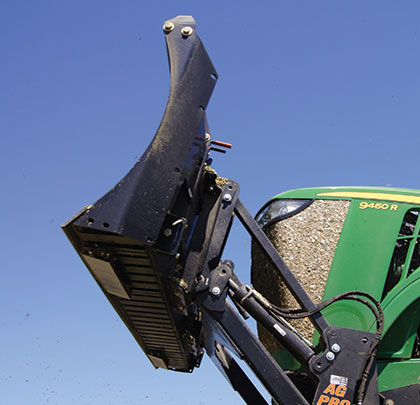![]()
Equipment and tools can be selected because of the one thing they do best, but more often they make it onto jobsites because of the many things they do best. Look around any roadwork or construction site and you’ll spot an arsenal of equipment and attachments that fit this description.
One attachment that lends itself to the versatility every contractor can use is the dozer blade. It takes on heavy-duty work day-in and day-out, preparing worksites, grading roads, creating ditches, and pushing tons of snow.
Dozer blades are built to be multi-purpose, but not all are created equal; selecting one should go beyond sheer compatibility with a tractor. In fact, careful consideration of the blade’s design and capabilities can have a huge impact on how versatile it really is, how quickly and efficiently it can complete projects, and how long it’s going to last.
RESULTS MAY VARY
While the general design of a blade is simple, there are several components that vary from manufacturer to manufacturer, and they can impact what you can do, how much you can do, and where you can do it.
Height x Width = Capacity: Capacity is one of the key factors to consider, and it is determined by the height and width of the blade. Heights range from 27 to 48 inches, and most manufacturers offer extensions that bring their blades up to 72 inches. The taller height allows operators to push more material, which results in fewer passes, and reduces the chance of material flowing up and over the top the blade. For even greater capacity, manufacturers offer optional box end plates that can be mounted to each end of the blade. This helps keep more material contained so operators can push more in fewer trips.
Blade widths range from 8 to 20 feet. Some can be adjusted from 12 to 20 feet on the fly to give operators the capacity of a larger blade and the flexibility to access hard-to-reach areas. The operator can retract the blade to get close to buildings; then extend it to maximize the amount of material transferred. Moving from one job to the next is also easier. Instead of placing the tractor on a trailer or removing the blade, operators simply retract the blade and head down the road.
Go the best way: How much material a blade can push is one thing, but its flexibility to tilt and angle can dramatically affect how much control the operator actually has. Most dozer blades are either four- or six-way styles. A four-way blade moves up and down and angles left and right, which is ideal for pushing snow and dirt to one side. It also reduces the amount of material that flows over the sides, so each pass is cleaner and there is less need for backtracking. In some cases, angling the blade left or right also can provide enough clearance to maneuver around busy jobsite between equipment or through gates.
A six-way blade also moves up and down and angles left and right, but unlike the four-way, each side also tilts up or down. In other words, an operator can raise either side of the blade higher than the other. This is especially helpful for working through tough soil when grading and leveling roads and construction sites.
Depending on the model, operators can adjust the blade angle manually or hydraulically. A manually adjustable blade requires the operator to jump down from the tractor and move the blade to the desired angle by hand. This not only takes time, but also increases the risk of injury during the winter when the chance of slipping or falling on the snow and ice is greater. A blade that has a hydraulically powered angling system is safer, faster and easier because it can be adjusted from inside the cab. ■
About The Author:
For more information about dozer blades, contact your local dealer for attachments that will work with your particular brand of equipment and will also tackle the destined workload.
_________________________________________________________________________
Modern Contractor Solutions, February 2015
Did you enjoy this article?
Subscribe to the FREE Digital Edition of Modern Contractor Solutions magazine.

Choosing The Right Dozer Blade


